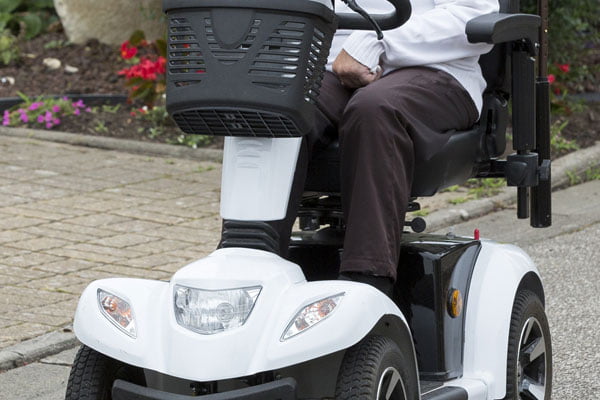As of 2021, here’s how to get a mobility scooter through Medicare:
- Qualification: First, your doctor must state that you have a medical need for a mobility device to help you perform daily activities in your home. Notably, Medicare will only cover mobility devices when they’re necessary for in-home use, even if you plan to use them outside. In other words, you must have a condition that makes it difficult to move around in your home without help.
- Doctor’s Prescription: Your doctor should write a prescription that includes:
- The medical reason why you need a mobility device (detailed and specific).
- A description of your home, indicating it can accommodate a mobility device.
- An affirmation that you are capable of operating the device, or that someone is available to help you.
- Face-to-face Examination: Medicare requires that you have a face-to-face examination with your doctor or another healthcare provider, such as a nurse practitioner or a physician’s assistant, before they prescribe a mobility device. During this visit, your doctor will evaluate your needs and discuss which options might work best for you.
- Detailed Product Description (DPD): If your doctor believes a power mobility device (like a scooter) is necessary, they will need to provide a written order and a detailed product description for the specific mobility device. This documentation must contain information about the specific device being ordered, including its capabilities and why those capabilities are medically necessary for you.
- Medicare-approved Supplier: You’ll need to go to a supplier that participates in Medicare. The supplier must accept assignment, which means they’ve agreed to accept the Medicare-approved amount as full payment for any covered items.
- Submitting Claim: The supplier will submit the claim to Medicare. If approved, Medicare Part B (Medical Insurance) will cover power-operated vehicles (scooters) and manual wheelchairs as durable medical equipment (DME). Medicare helps cover DME if the doctor prescribes it for use in your home.
- Your Cost: If the claim is approved, Medicare will cover 80% of the cost, and you will need to pay the remaining 20%, along with any unmet yearly deductible.
Remember, these are the steps according to the rules in place up to 2021, and there may have been changes after that. It’s best to check the current rules on the official Medicare website or by contacting Medicare directly.
Finally, keep in mind that each case is unique and that the specific type of mobility device that Medicare will cover depends on your individual needs and circumstances. Always consult with your healthcare provider for personalized advice.

